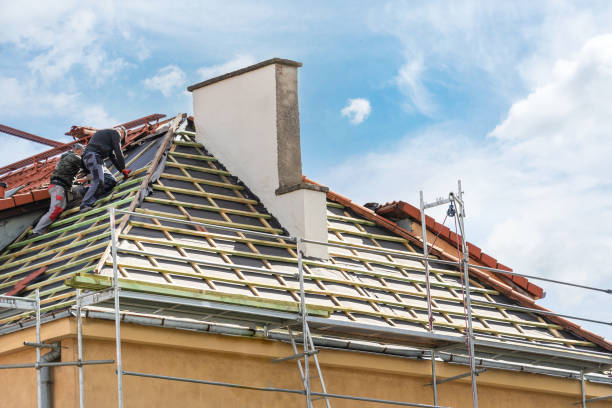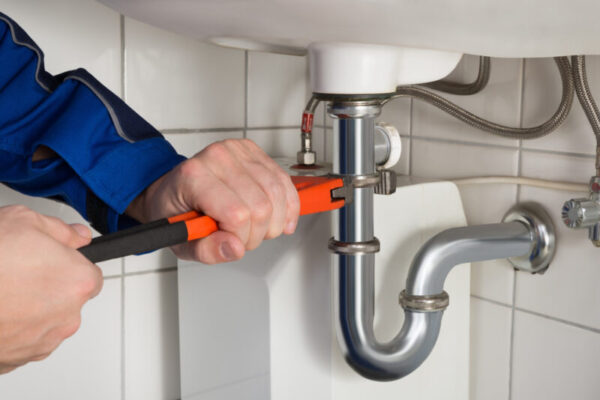When we think about improving energy efficiency at home, our minds often jump to windows, insulation, or upgrading to energy-efficient appliances. But the often-overlooked hero in this conversation? Your roof. Yep, that giant structure covering your home does a lot more than keep the rain out.
The Impact of an Aging Roof
Let’s start with the basics—your old, tired roof might be costing you more than you think. Over time, roofs naturally deteriorate, losing their ability to keep out the elements. Leaks, drafts, and poor insulation all contribute to wasted energy.
An aging roof can create:
- Air leaks – Hot or cool air escapes, making your HVAC system work overtime.
- Poor insulation – If your roof isn’t doing its job, heat transfer is happening faster than you can blink.
- Higher energy bills – When your heating and cooling systems are working double-time, you’re paying for it.
And if your roof is letting out that much energy, your home is probably uncomfortable too. That’s why a roof replacement can be a game-changer in the energy efficiency department.
Modern Materials: The Roof’s Secret Weapon
When you’re ready for a roof upgrade, choosing the right materials for your roof replacement makes all the difference. Roofing materials have come a long way in terms of efficiency. Newer technologies allow them to reflect more sunlight, absorb less heat, and even help regulate indoor temperatures.
A few options to consider:
- Metal roofing – Known for being reflective, metal roofs bounce the sun’s heat back into the atmosphere rather than letting it seep into your home.
- Cool roofs – These are specially designed to reflect more sunlight and absorb less heat than standard roofing materials. They often come in light colors and coatings that help with reflection.
- Solar shingles – These look just like traditional asphalt shingles but pack a punch by harnessing the sun’s energy to generate electricity for your home.
With the right materials, your roof can act as a barrier, keeping your home cooler in the summer and warmer in the winter.
Better Insulation, Better Efficiency
One thing often overlooked in roof replacements is insulation. Your roof doesn’t just sit there looking pretty—it works in conjunction with insulation to keep your home energy-efficient. A roof replacement is a perfect time to assess and improve the insulation underneath.
Adding or upgrading insulation during the replacement process ensures:
- Minimal heat transfer – In the winter, it helps keep warmth inside, while in the summer, it keeps the heat out.
- Consistent indoor temperatures – Your home will feel more comfortable year-round without temperature swings.
- Lower energy consumption – Less work for your HVAC system means a smaller carbon footprint and lower bills.
Ventilation: The Unsung Hero
Now, let’s talk about ventilation—a feature that often flies under the radar but plays a crucial role in keeping energy efficiency in check. Your attic needs to breathe. Without proper ventilation, hot air gets trapped, and your home starts feeling like a sauna in the summer.
When you replace your roof, make sure ventilation is part of the package. Proper airflow reduces heat buildup, which lowers the strain on your air conditioning system and keeps the roof materials themselves in better shape, prolonging their lifespan. It’s a simple yet effective way to enhance energy efficiency that most people don’t even think about.
The Role of Roof Color and Finish
It may seem like an aesthetic choice, but the color and finish of your new roof can significantly impact how energy-efficient your home is. Light-colored roofs reflect more sunlight than dark-colored ones, which is why homes in warmer climates tend to benefit from roofs with lighter shades.
Similarly, reflective coatings can be applied to most types of roofing material to boost energy efficiency. These coatings reflect solar radiation and reduce heat absorption, keeping your home cooler during the hottest months.
Long-Term Savings
Now, you’re probably wondering—does all this effort and expense really pay off? The answer is yes! A more energy-efficient roof will reduce your heating and cooling costs over time. And not just by a little—replacing an old roof can lead to significant energy savings.
Here’s where the savings come in:
- Lower utility bills – With a well-insulated and ventilated roof, your HVAC system doesn’t need to work as hard, meaning you’re using less energy.
- Increased home value – Energy-efficient upgrades are attractive to potential buyers. A new roof could make your home stand out in the market and increase its resale value.
- Tax incentives – Depending on where you live, you might qualify for tax credits or rebates for energy-efficient home improvements, including roof replacements.
Making the Investment Worth It
While the upfront cost of a roof replacement may seem daunting, think of it as an investment. Not only are you improving your home’s energy efficiency, but you’re also increasing its overall value and comfort. Plus, you’ll have the satisfaction of knowing that your home is playing a part in reducing energy waste and greenhouse gas emissions.
Wrapping Up
So, when you’re thinking about upgrading your home’s energy efficiency, don’t forget to look up—literally. A roof replacement can be a smart move, offering long-term benefits that go far beyond just curb appeal.






